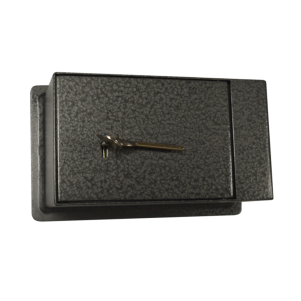How Do I Determine The Appropriate Size Of Safe For My Belongings?

You might think that the size of safe you want is determined simply by what you want to store in it, and of course that is a major factor, but there are many other considerations to make which will help you determine the right size of safe for your needs.
Fundamentally, we use a safe for different reasons and these can be very contrasting reasons. Safes are most commonly used for keeping valuable items safe from theft, but some people are more interested in keeping items safe from fire, and therefore being destroyed. So a family may wish to keep rare photos safe, or family heirlooms which have sentimental value and are irreplaceable, but have no financial value to a thief. Similarly, a business may wish to keep digital data safe, or paper documents, which have no value to anyone but the business. So the storage needs of a safe are the first consideration, but it may be the case that you have a mixture of needs, and hence you need a safe that provides security from both theft and fire. In these circumstances, you also need to consider other factors.
- Increasing needs – It is common for someone to purchase a safe for long term use, but for one main purpose, however, over the years, we find more and more items to store in the safe and our security needs increase. For this reason, it is usually advisable to select a size of safe that is initially bigger than you need, to accommodate these inevitably increasing requirements.
- Do you need to physically secure the safe? – Some people want to secure a safe by bolting it to the floor or wall. This prevents a thief removing the safe from the premises and adds an extra level of security. This may be dictated by your location, your other security controls, your insurance policy or the value of items you have stored in the safe. Whatever the reason, only a certain size or type of safe can be bolted to a surface, and these usually come with pre-drilled bolt holes so you don’t do this yourself and risk compromising the integrity of the safe. And for obvious reasons, the size of safe you select needs to suit the environment and the space you have available, so it doesn’t become an obstacle, doesn’t get damaged and isn’t a potential fire hazard.
- Do you need the safe to be portable? – On the flipside, many people like to have a portable safe they can move between locations, maybe between home and work, or to events if it is a small cashbox-type safe. If you need the safe to be portable, obviously it needs to be quite small.
- Do you need the safe to be hidden? – Many people like to discreetly hide a safe, for an added layer of security and not to bring attention to it, but also because it is aesthetically more pleasing on the eye in the home if a safe is hidden away. It is possible to store safes under the floor or in a wall cavity, and safes can also be integral to a wardrobe. In this case the safe would tend to be a medium size.
- Do you need to access the safe? – If you expect to need regular access to your safe, then you need to consider where it is located and hence, what size it is. If you want to access the safe most days, then having to roll back carpet or remove floorboards to access it under the floor each time isn’t practical. Alternatively, if you very rarely need to access the safe, you probably don’t need it visible and close to hand, and it can probably be stored out of view.
- Is it only for digital storage? – Businesses now have to be very careful about digital storage and data protection on hard drives, USB drives or discs, and while these carry no financial value, they need to be protected. However, these items are very small and hence, you won’t need a large safe in most cases.
- Insurance – Bear in mind that your insurance policy may dictate the rating of safe you need, and therefore the size. An insurance policy will only cover you for a certain amount if the insurers are confident the valuables are safely protected, and hence they may insist on a certain rating of safe. Stronger and more robust safes, and therefore higher rated safes, will increase in relative size.
- Internal and external measurements – Safes for both valuable and fire security have thick walls for obvious reasons. This can mean that the internal space is deceptively small. Make sure you have measured and considered the internal dimensions as well as the external dimensions of the safe, it is possible that you can’t fit in everything you want in a certain sized safe, and you may need to go bigger.
Contact MB Direct for advice and recommendations on the right size of safe
If you have any doubts about the size of safe you need, contact our expert team at MB Direct. We can advise on the best type of safe for your needs and can help you consider all the options from our range of popular safes for home and business use, so get in touch today.